This Week At Angama #60
29 March 2019 | This Week at Angama | Adam Bannister

In the 60th consecutive week of this photographic series, it can become more difficult to continually showcase fresh and new material. This week, I focused on capturing those animals that often slip under the radar. And for those species that feature week after week, I made a concerted effort to show them in a new way.
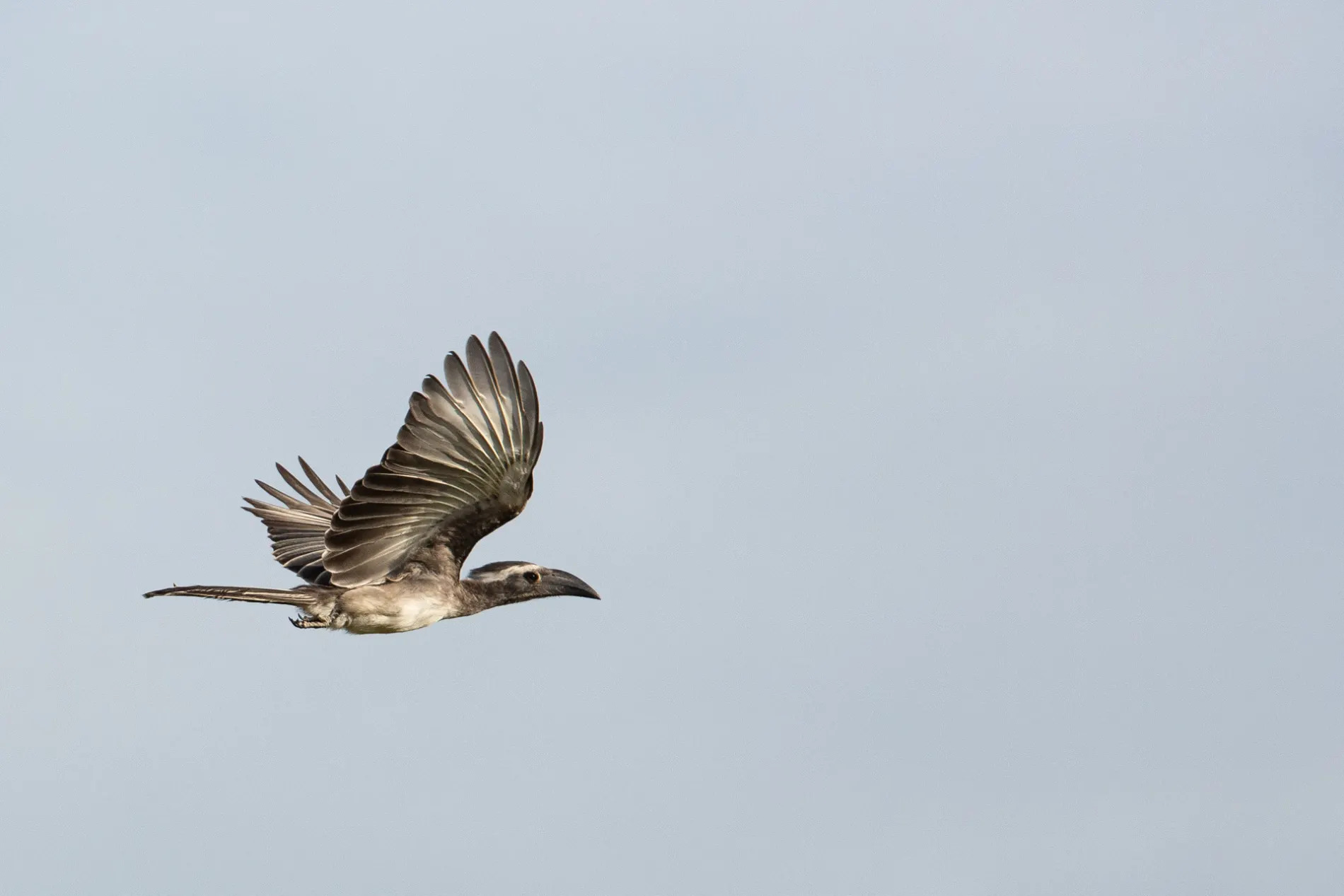
The grey hornbill is not a common bird in the Mara and this the very first time I have photographed one. [f 5.6, 1/5000, ISO 640, +0.33]
 This Week At Angama
This Week At Angama
Another one of the hornbill species, but very different in its appearance and size is the ground hornbill. Ground hornbills are such comical birds. They traipse around the grasslands in a small family unit, known as a phalanx. Their turkey-like appearance makes them rather ungainly and awkward to photograph. With a glint in its eye, and beautiful eyelashes, I believe this is one of the best ground hornbill shots I have ever taken. [f 5.6, 1/800, ISO 400, -0.67]

Significantly more common but often overlooked, are the lesser grey shrikes. These migratory birds are currently on route to Southern and Central Europe where they will breed. [f 5.6, 1/100, ISO 320, -0.33]
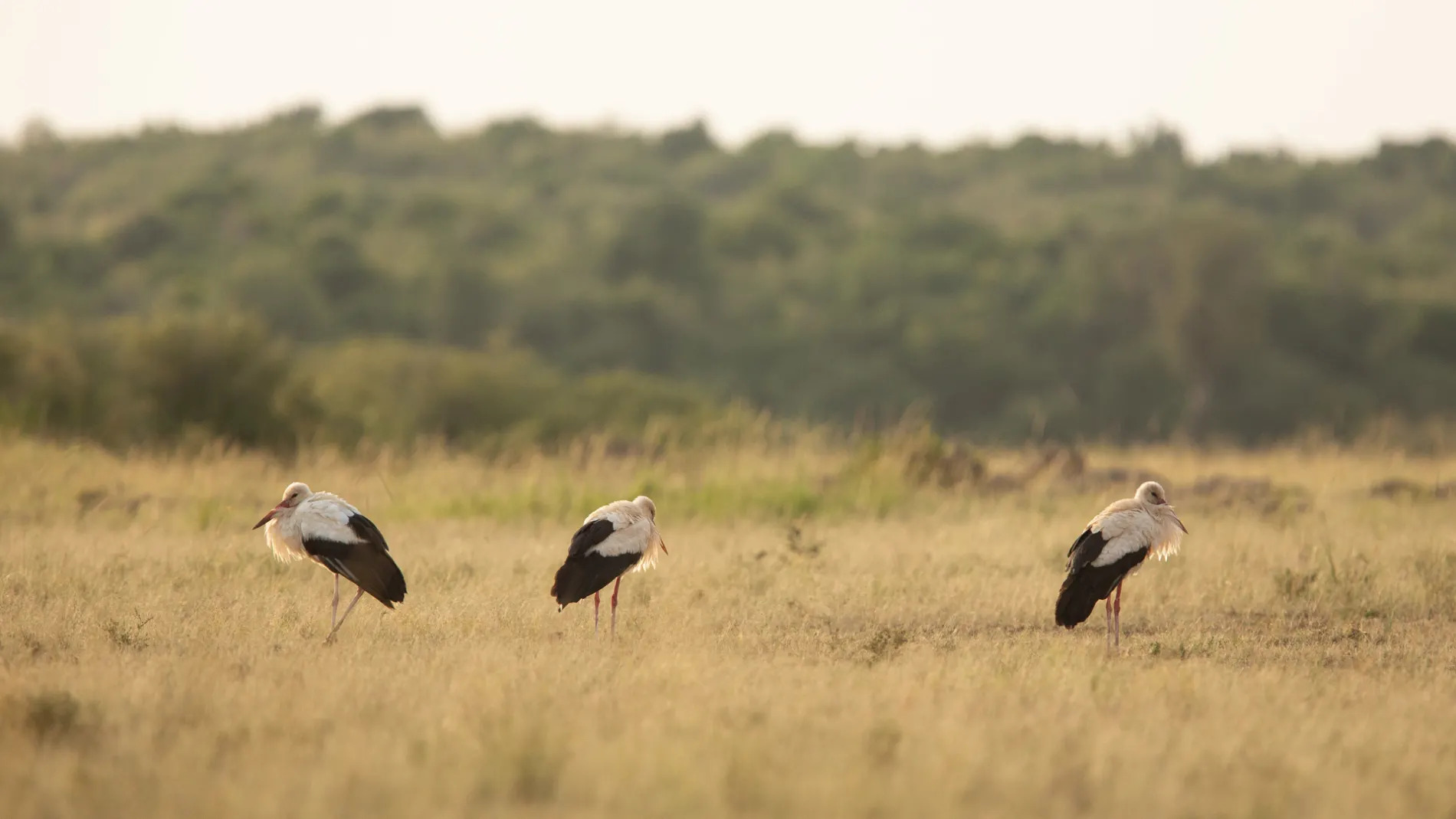
White storks are another crowd favourite. They are also long distance migrants, spending the cold northern hemisphere winters down in the southern parts of Africa. They too are moving up north in time for Spring. [f 4.0, 1/2000, ISO 800, +0.33]

Grey-crowned cranes have featured a few times in this series, but with such fantastic head plumage, how could they not? Spending time with a pair of these birds is a real treat – and fortunately for us they are fairly common year-round in the Mara. [f 4.5, 1/2500, ISO 640, -0.33]

As the grass starts to get longer, serval sightings tend to reduce. It is always a treat to get a momentary view of this delightful small cat. [f 5.6, 1/320, ISO 320, -0.33]
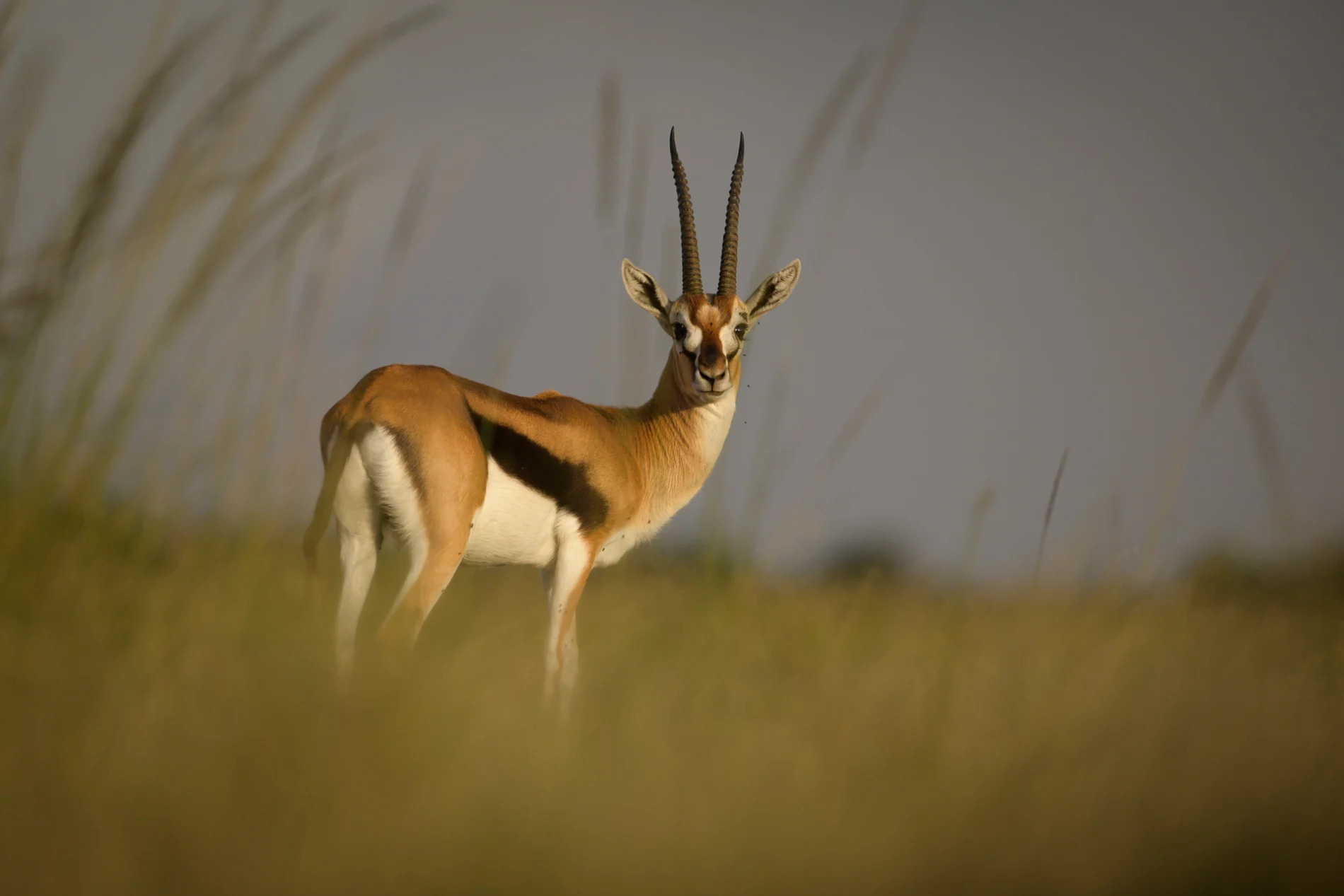
Embrace the long grass and let it work for your photography. Here, I dropped down low and used the long grass to create a natural frame. The low angle provides a lion-like view of what it would be like to try to hunt down a Thomson’s gazelle. [f 5.6, 1/1000, ISO 320, -0.33]
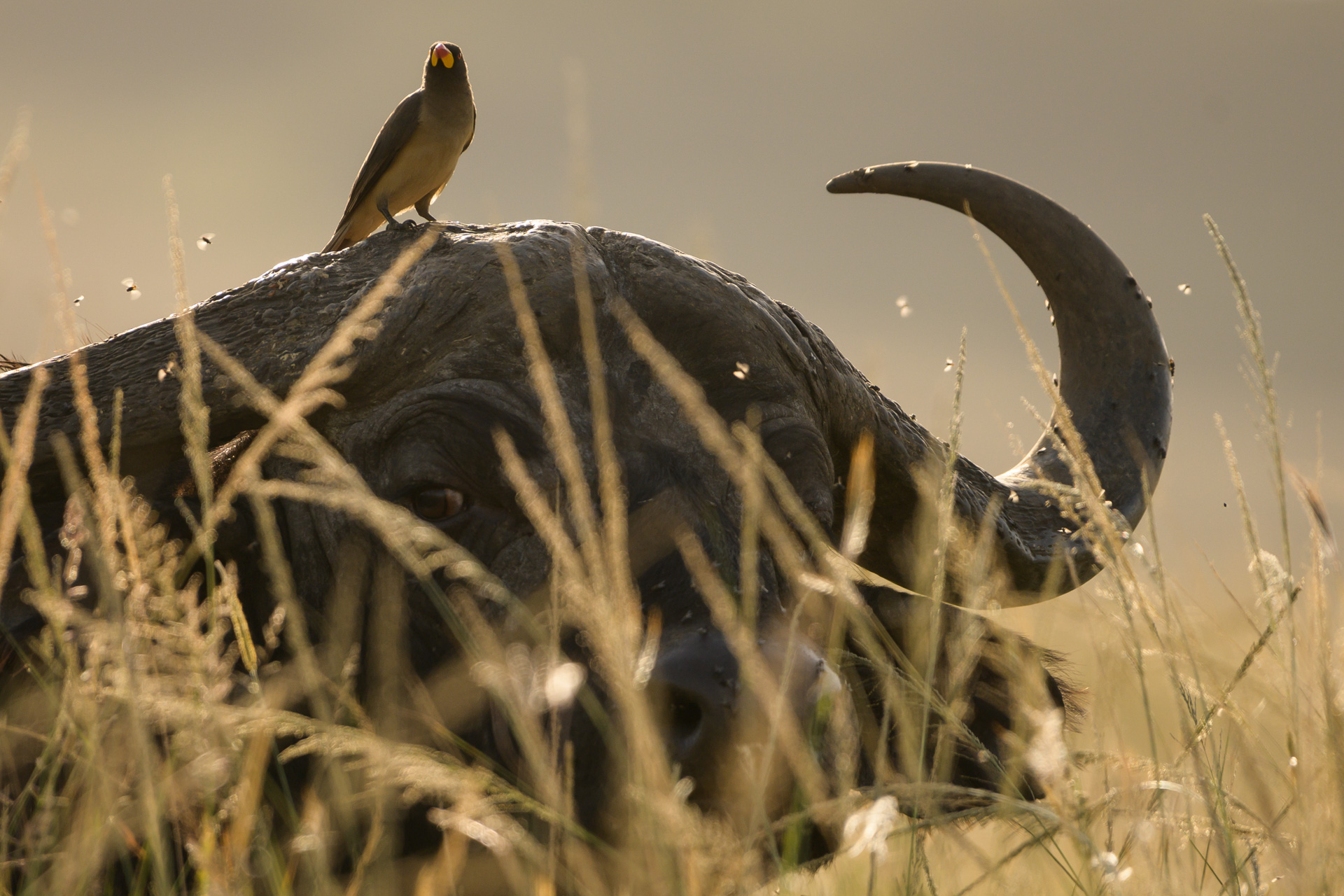
I really like this rather unusual view of a buffalo and its trusty oxpecker. For me, the slightly obscured view, together with the tight and unbalanced crop, gives the viewer a sense of uncertainty – which is definitely something I can relate to when I come across one of these lone, big, male buffalos. [f 5.6, 1/800, ISO 320, -0.33]
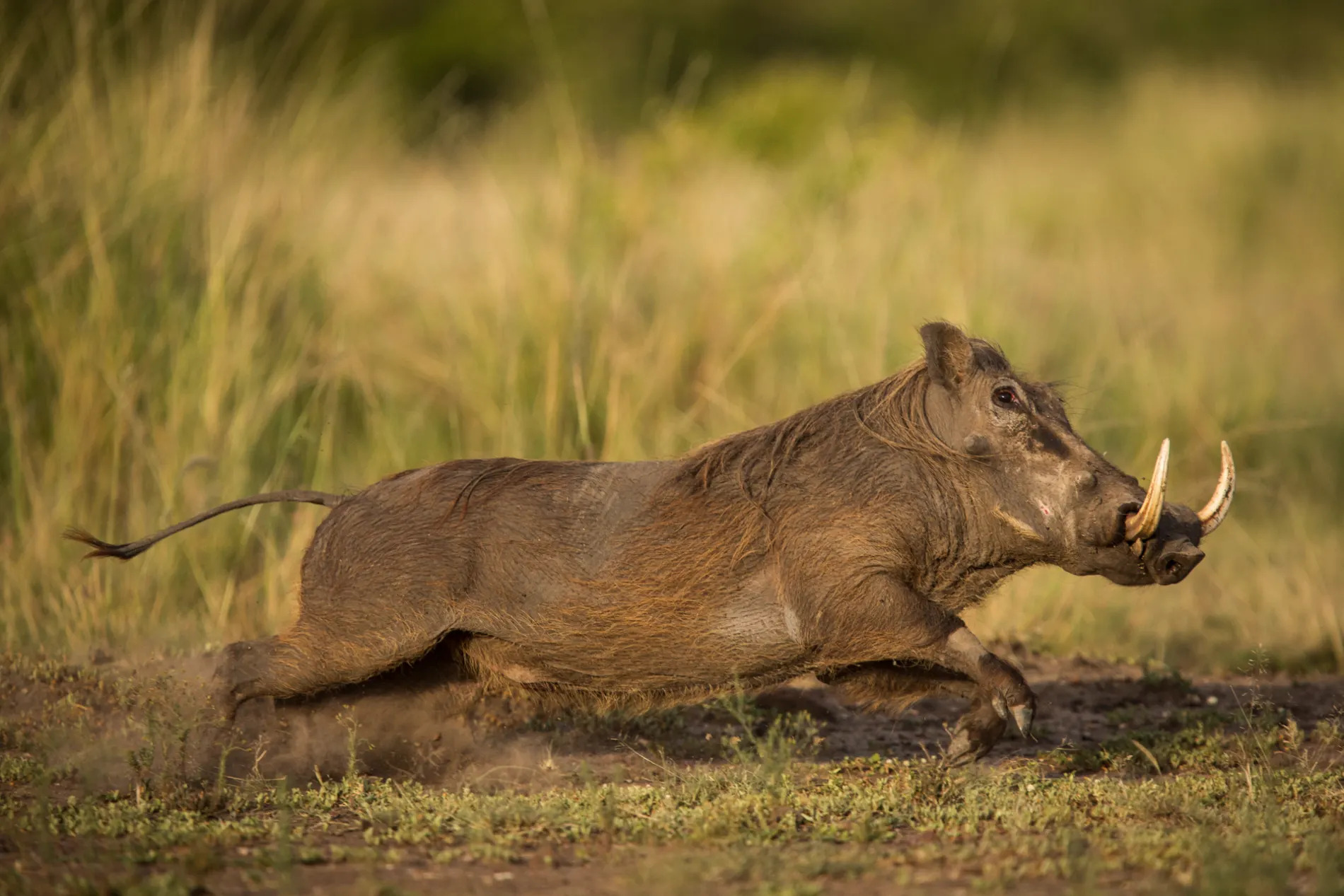
I do believe this is another first for This Week At Angama. Yes, that’s right, we have never shown an image of a warthog in this series. The reason? They are difficult to photograph well as they tend to turn and flee, which is exactly what I captured here. [f 4.0, 1/2500, ISO 640]
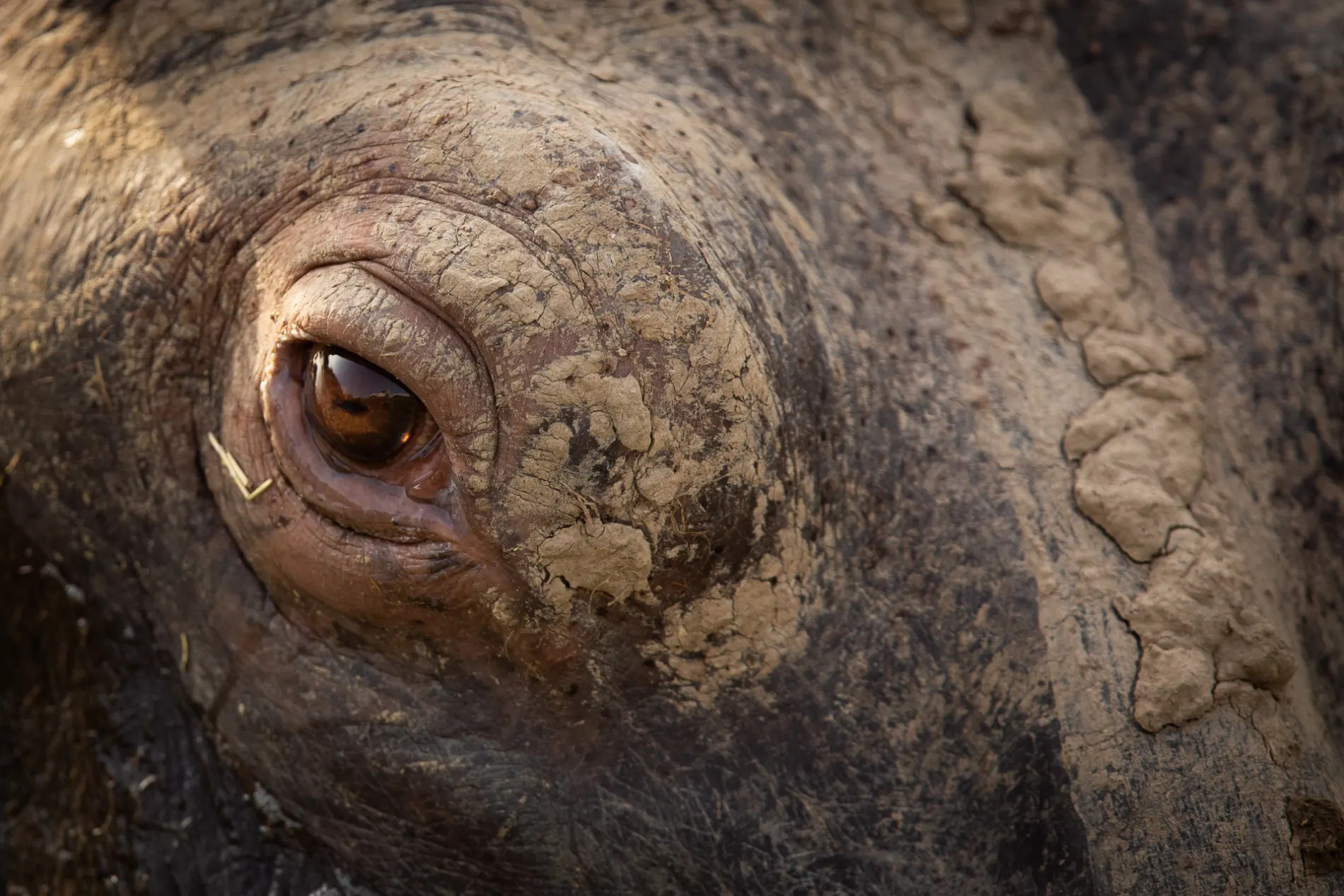
Now this is an unusual view of a hippo. If you look in his eye, you can see the reflection of my car. This huge, old male has obviously been pushed out of the Mara River and is now seeking refuge under a bridge that crosses a small drainage line. [f 4.0, 1/640, ISO 640]
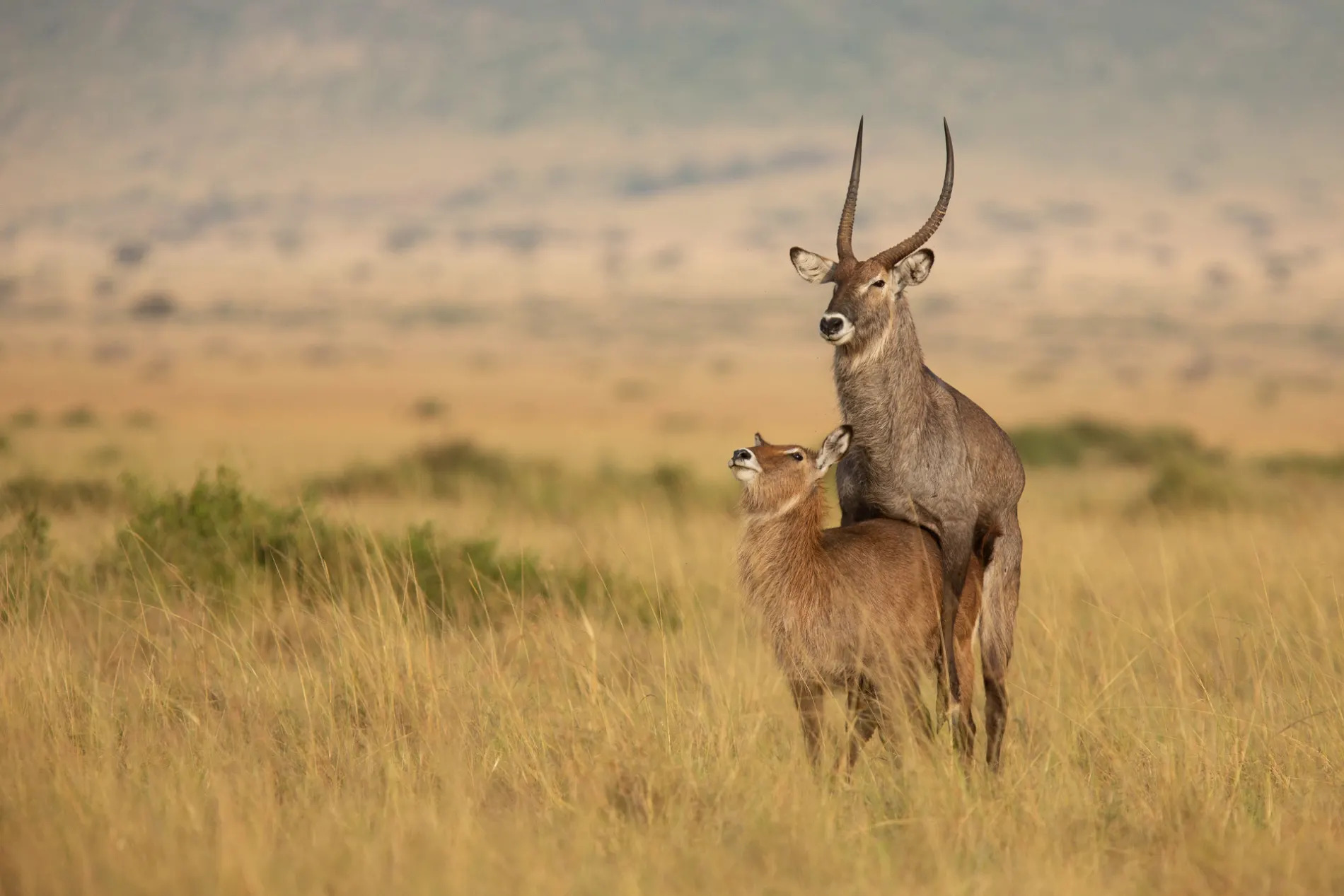
A little bit of action to brighten up your Friday. [f 4.0, 1/400, ISO 640]
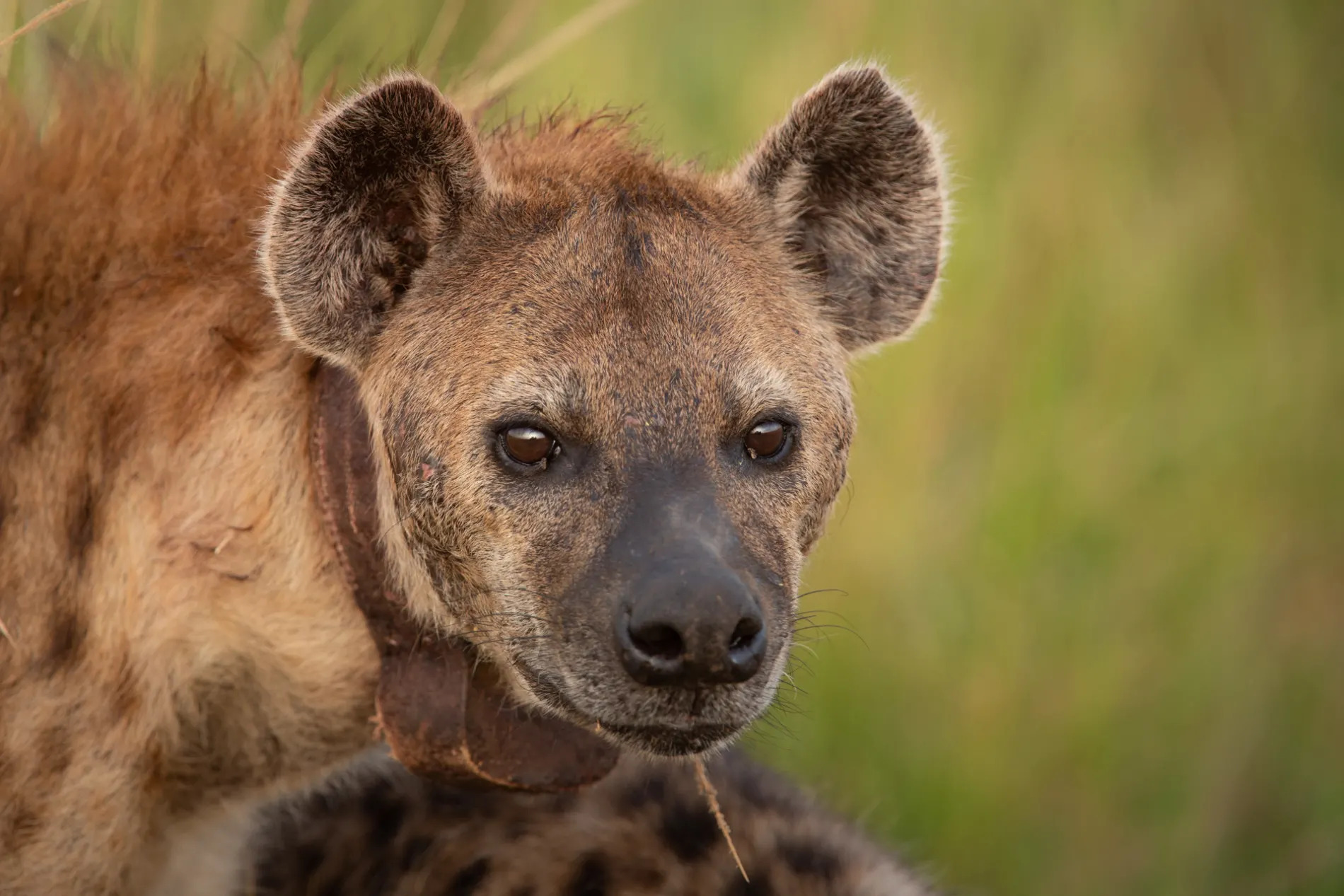
You will notice that this hyena has a collar on it. She is being researched by the Michigan State University Hyena Project. Affectionately, she is known as Waffles and is one of the most regularly monitored and well-studied hyenas in Africa. Originally, Waffles was born as a low-ranking female who fought her way up to the position of matriarch within the famous North Clan. Because of this, she is considered a ‘kind’ leader and often associates with lower-ranked individuals; behaviour not normally displayed by a female in her position. [f 4, 1/250, ISO 640]
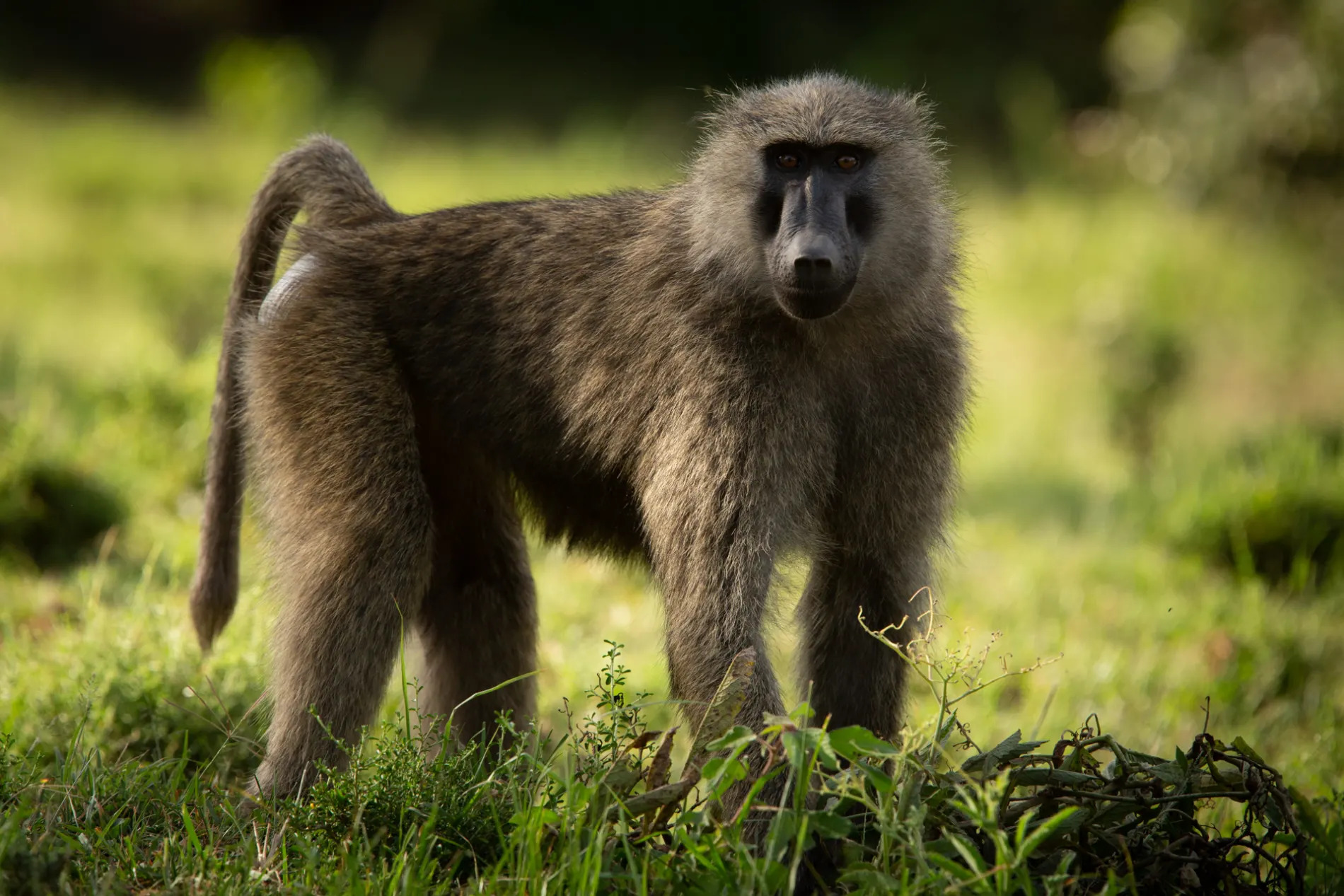
The second you pick up your camera, the baboons around camp run for the fig trees. I caught this teenager off-guard and was able to snap a single photograph before he sprinted off. [f 5.6, 1/800, ISO 640]
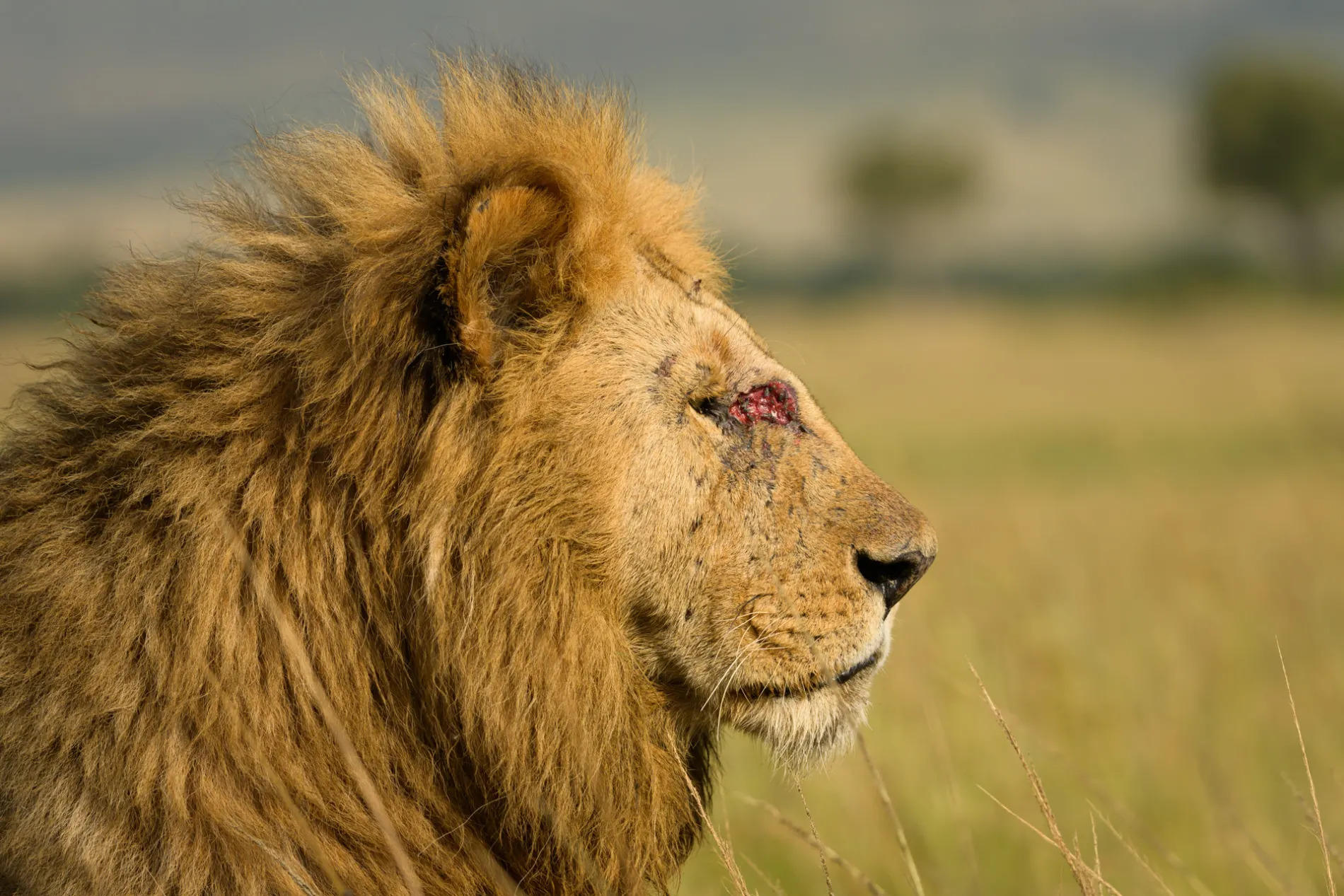
Of course, there had to be some lion pictures – after all what is the Mara without lions? This male has obviously been in a rather nasty fight. Fortunately, his injuries do not seem to be affecting his sight. I sat with him for ages before I was able to get a profile of his face which allowed for the full extent of his cut to be seen. [f 5.6, 1/1600, ISO 320]
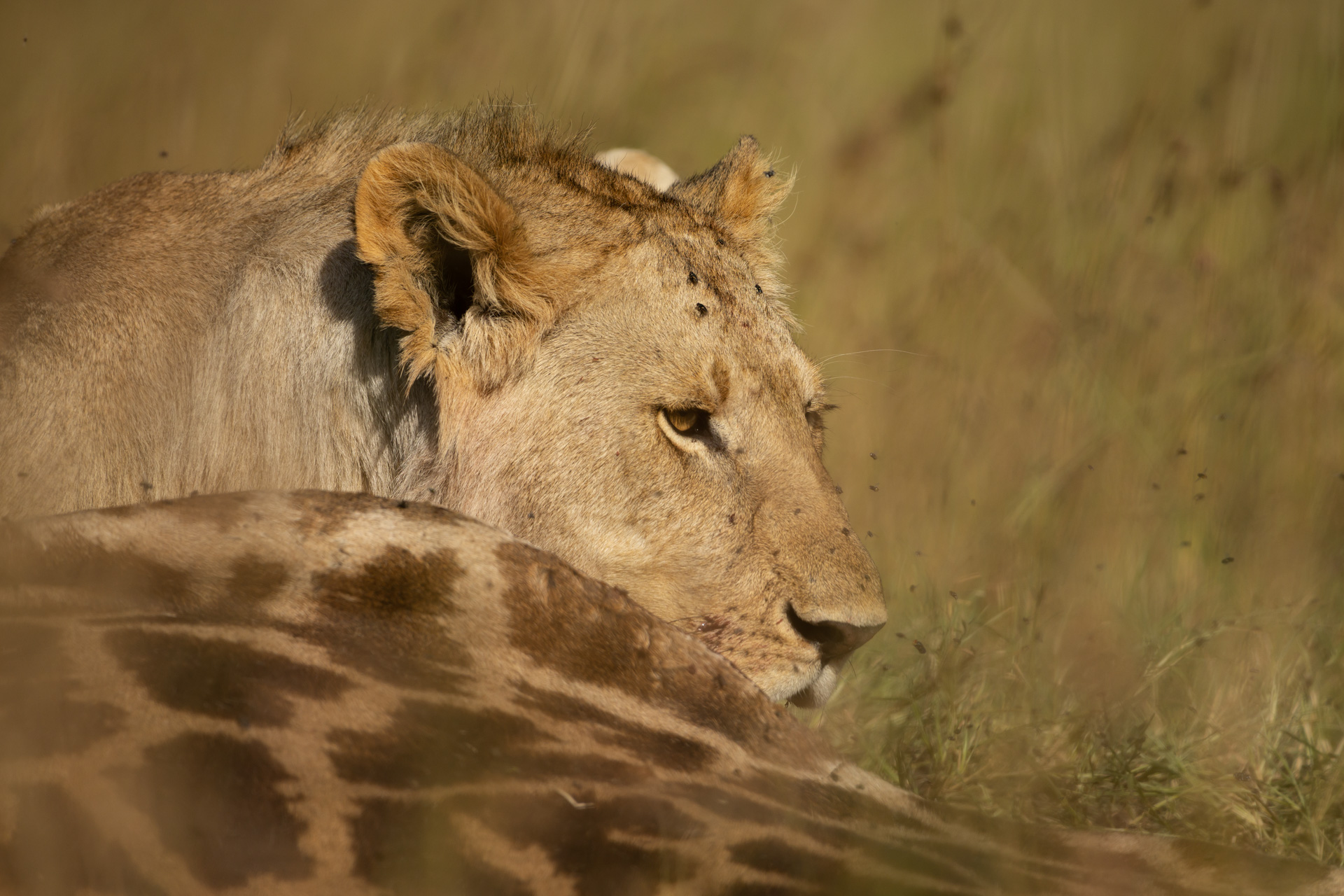
We are not sure if the lions killed this giraffe, or if it died by other means. Either way, members of the Owino Pride devoured this entire carcass over the course of two days. [f 5.6, 1/2000, ISO 320]

The Marsh Breakaway Pride is growing strong. They seem to be in complete control of the marshy areas along the Mara River, not too far from Angama Mara. Harsh lighting meant I shot this in black and white. The low angle was used to try and make you feel like you are one of the members of the pride. [f 5.6, 1/1000, ISO 250, +1.0]
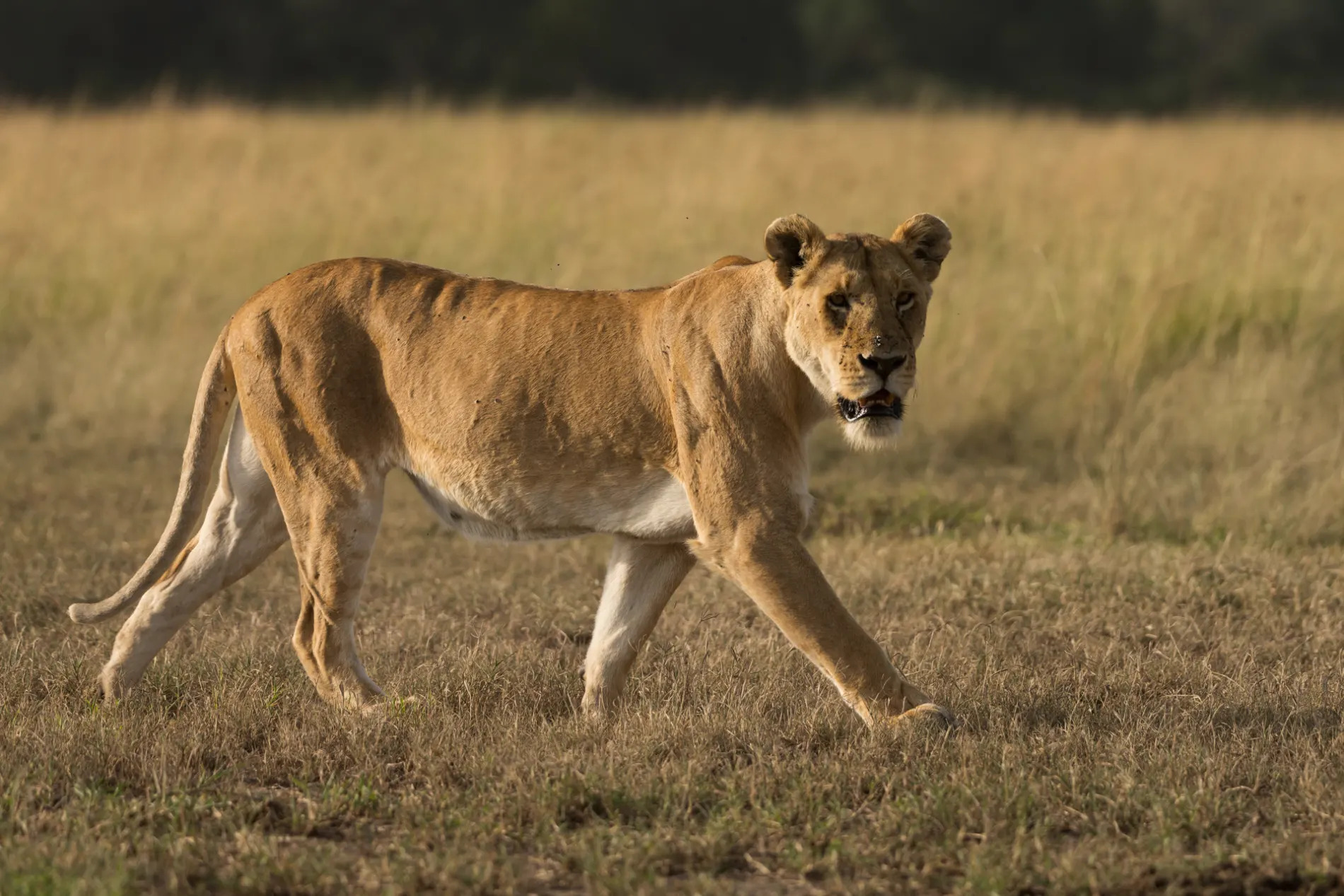
Eyes on the prize. A member of the Marsh Breakaway Pride flanks an unsuspecting warthog. Long story short …the warthog lived to see another day. [f 5.6, 1/1600, ISO 500]

This week comes with great sadness in terms of the lion dynamics. Mid-week a hippo carcass was discovered in a drainage line by the Angama Pride. They fed throughout the morning, before settling under the trees to rest. In the middle of the day the Marsh Breakaway / River Pride arrived on the scene. The two prides fought violently and we are sad to report that two of the three youngest Angama Pride cubs were killed. The third, and last, cub has yet to be seen and so we must assume it too may have been a casualty of the fight. This is one of the harsh realities of life in the wilderness. [f 4.0, 1/200, ISO 400]
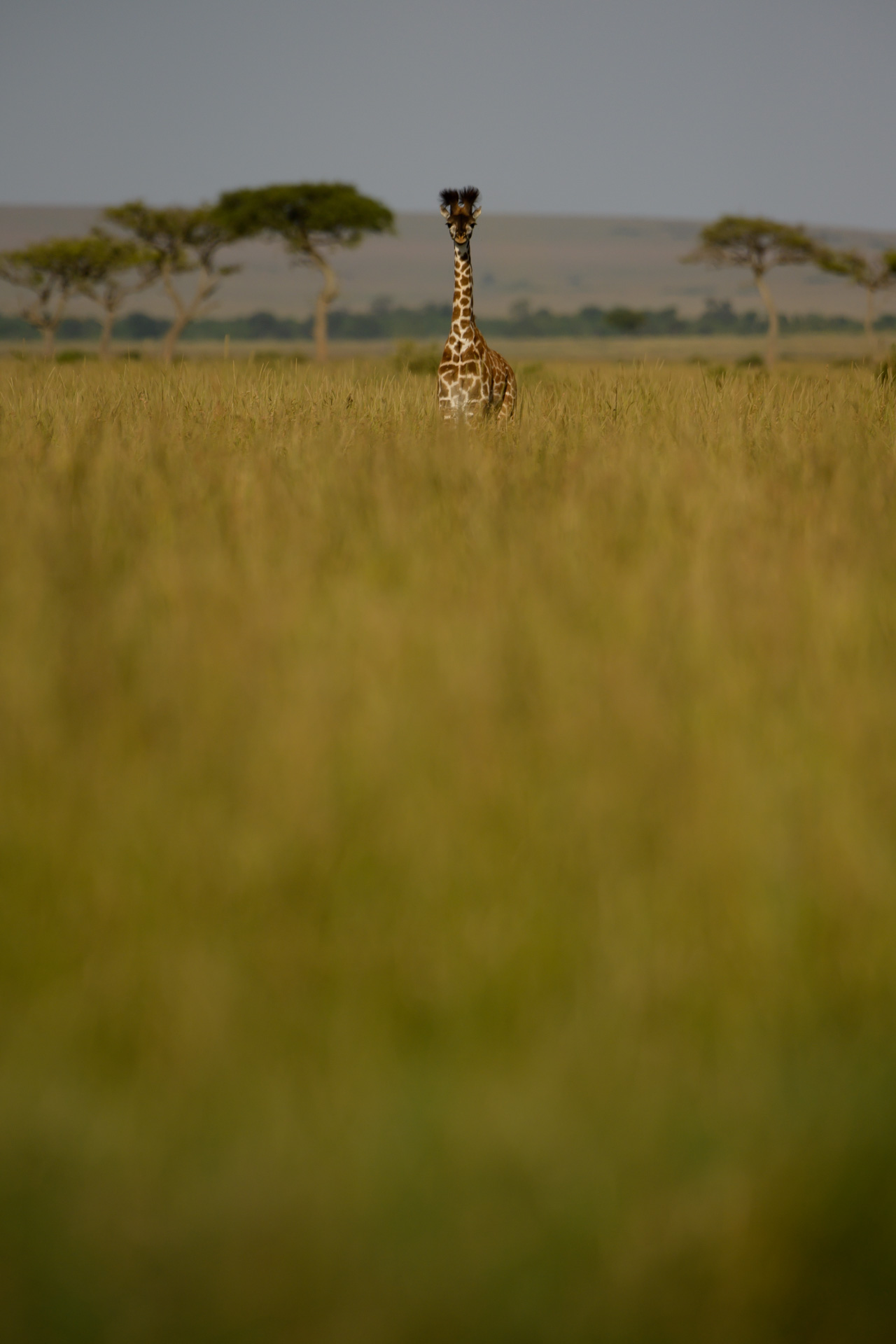
I just love the colours and textures of the grass in this photograph. The long, green grass can add so much to a photograph. [f 5.6, 1/3200, ISO 320, -0.67]

Elephants continue to thrive in the Mara. When I conduct photographic safaris, they are one of the main focus points as they allow me introduce guests to some important photographic concepts. [f 5.6, 1/1250, ISO 320, -0.33]

It’s hard to beat a brand new baby elephant. This particular one was tiny. She was covered in hair and not yet completely stable on her legs. [f 5.6, 1/320, ISO 320]
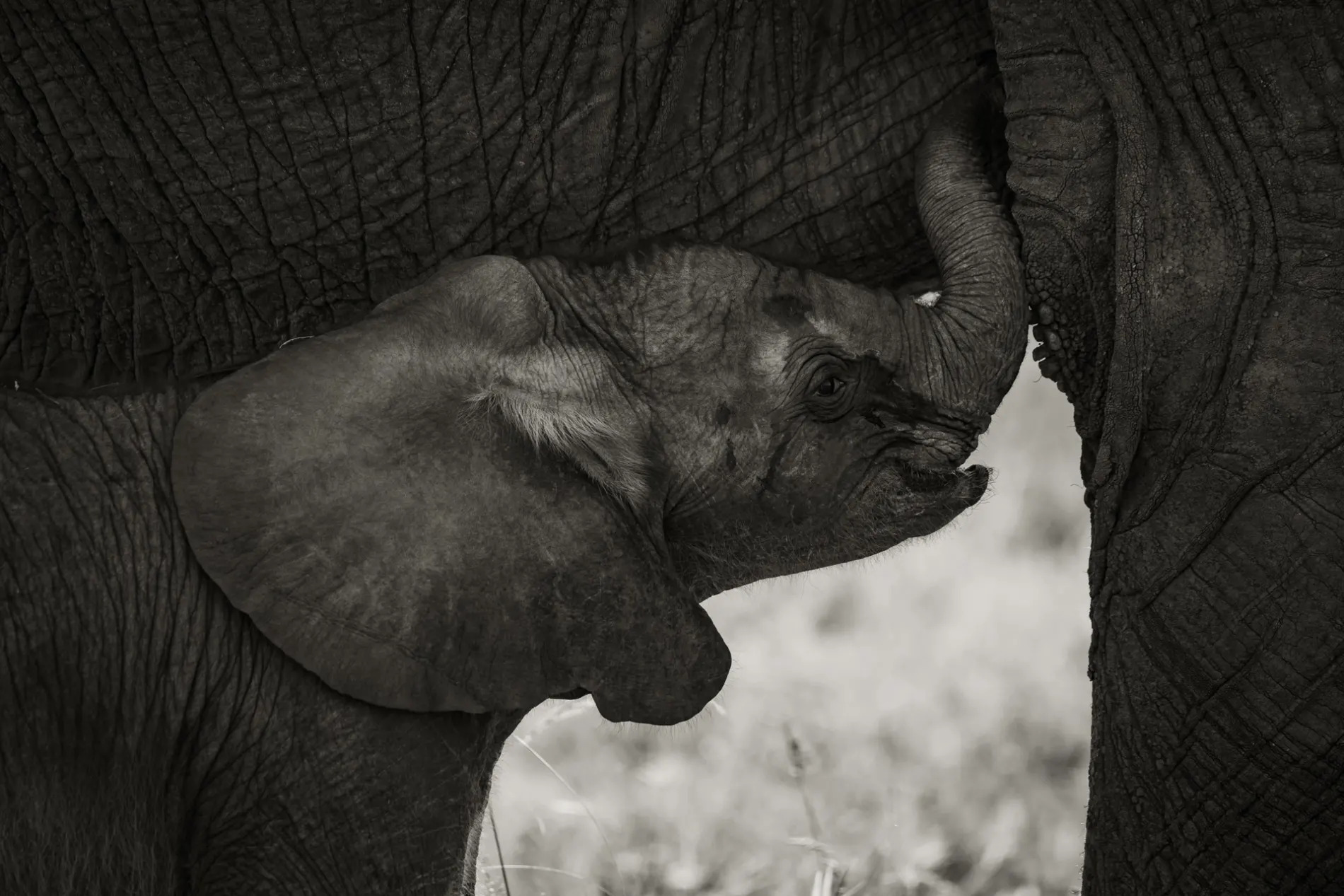
Getting in close really helps to capture the emotion of the moment. [f 32.0, 1/80, ISO 400, +0.33]
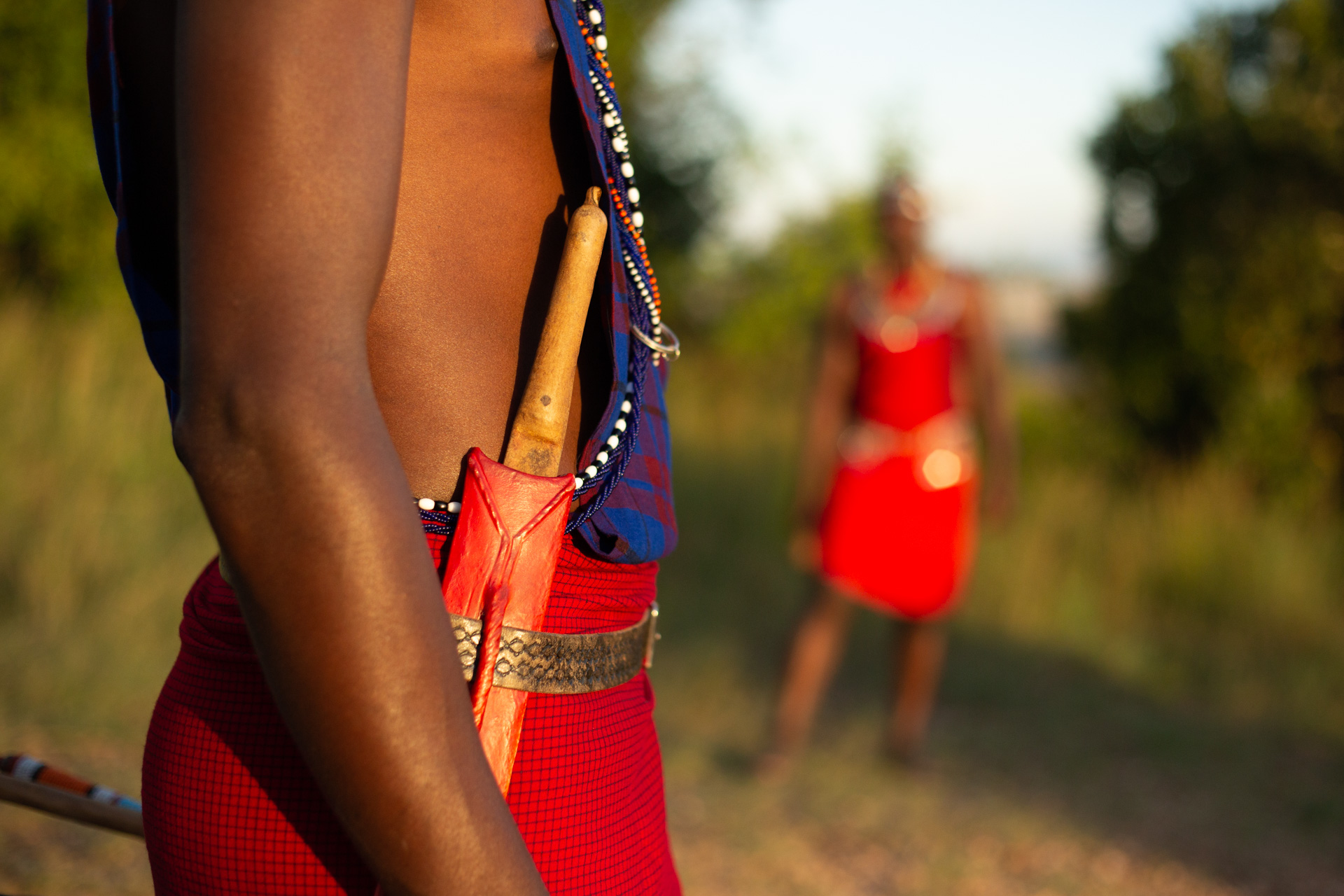
I am always entranced by the colour red and how the Maasai’s colour of choice juxtaposes with the green Mara background. How fortunate we are to be able to share this landscape with the Maasai people. [f 2.5, 1/4000, ISO 800, -0.67]

A stay at Angama Mara is not complete without witnessing a moving Maasai dance. [f 5.0, 1/30, ISO 1600, -0.33]
This week the Mara Conservancy decided to conduct a controlled burn along the escarpment. Each year small areas of grassland are selected to be burnt on a rotational basis. The park management appear to have chosen good conditions under which to burn and we hope that this brings about a surge of new shoots and life into this area. The fire burnt for about three days allowing the most incredible opportunities to photograph fascinating and raw images. Fire truly does add a new dimension to photography and I must admit I love the scenes that unfold.

[f 4.5, 1/1250, ISO 200]
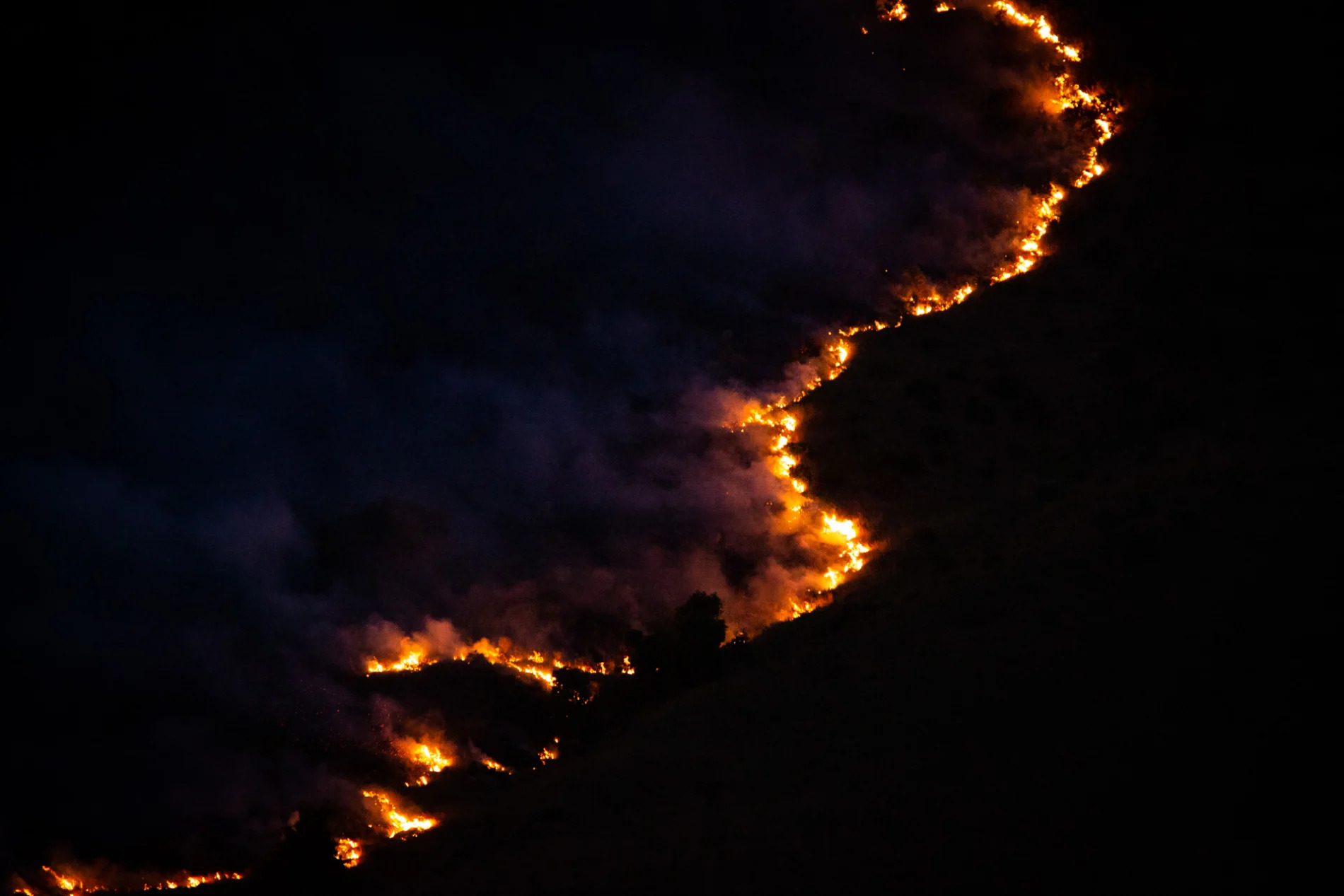
[f 4.0, 1/30, ISO 6400, -0.33]
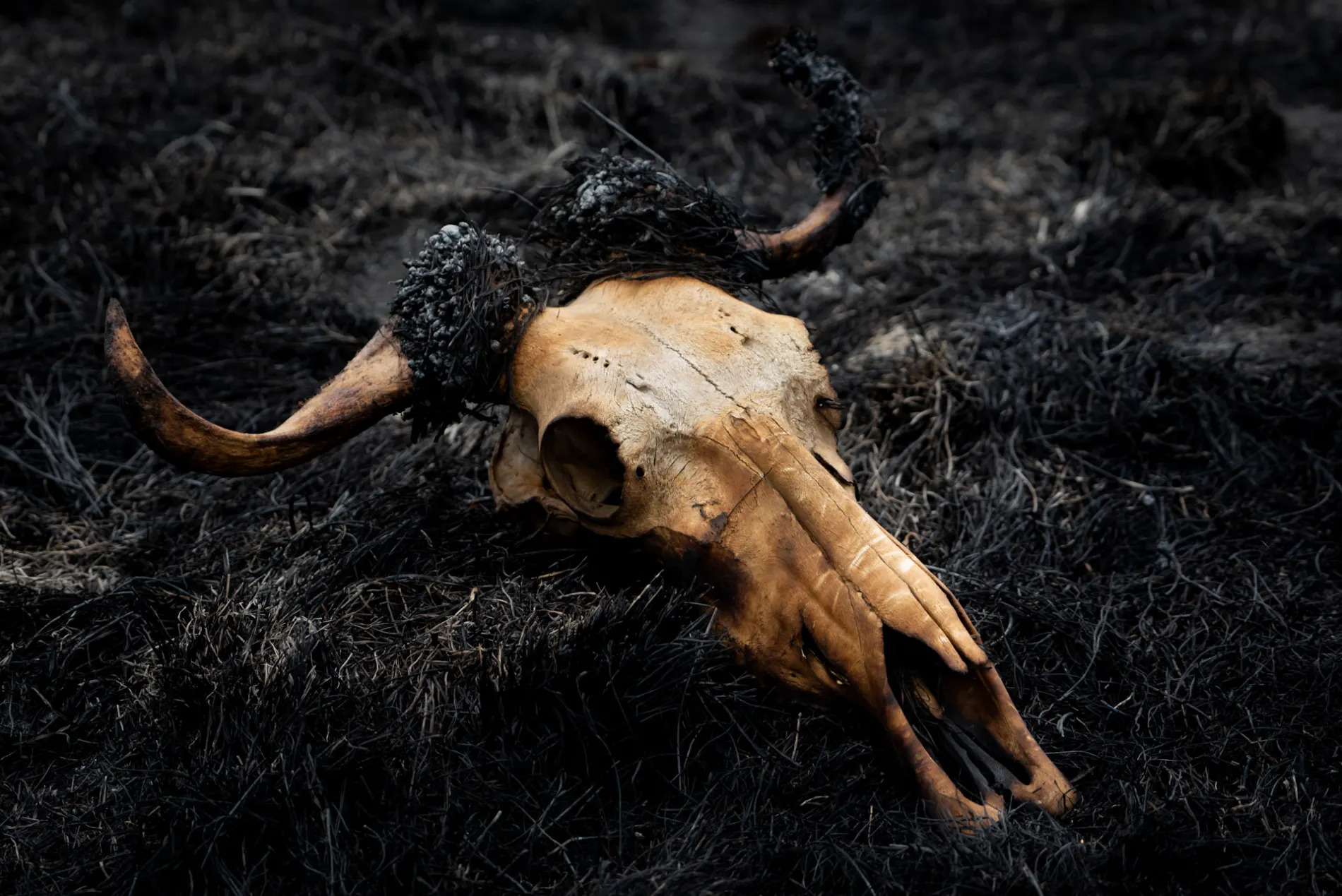 Photograph by Steve Mitchell
Photograph by Steve Mitchell
[f 5.6, 1/500, ISO 360]
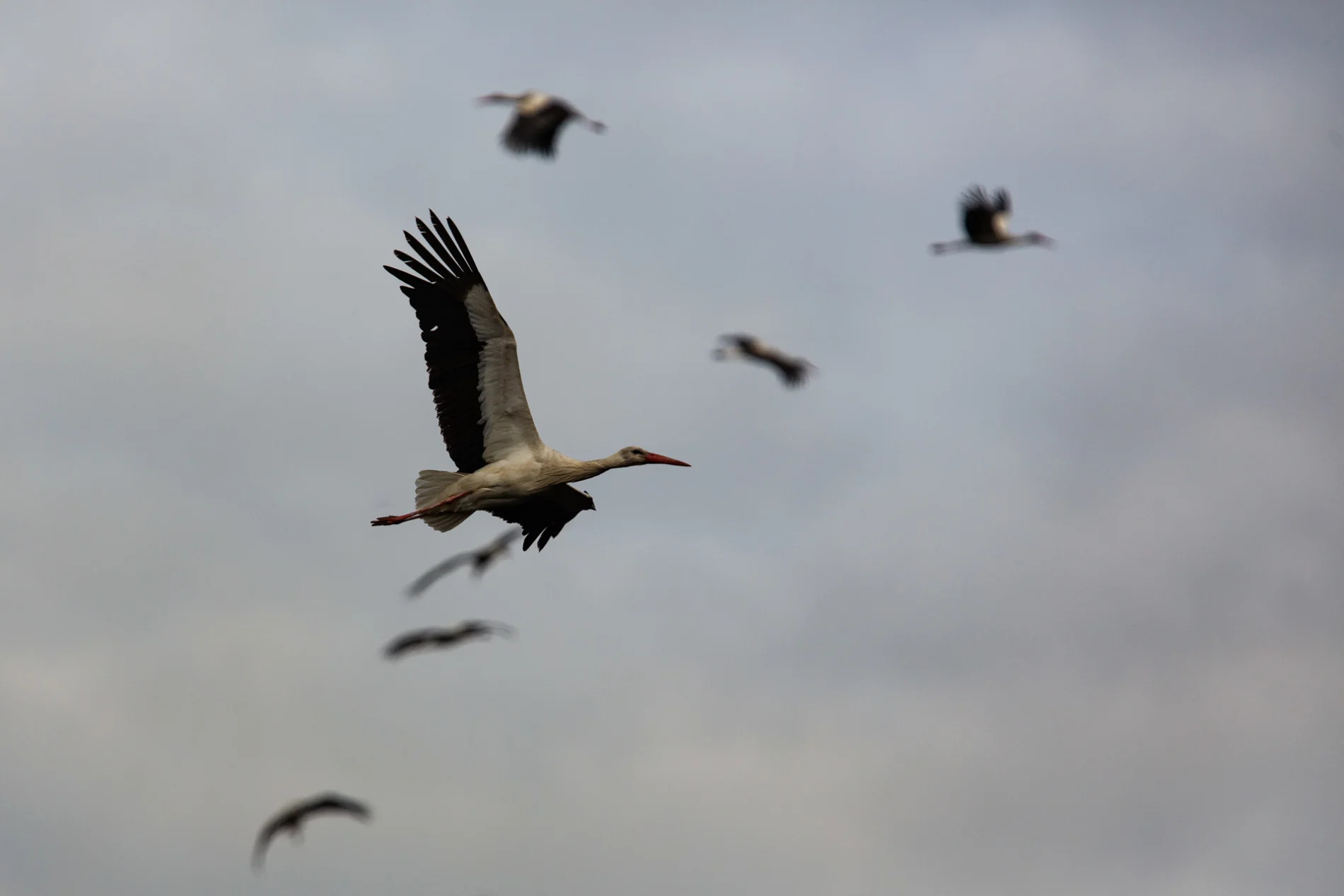
[f 5.0, 1/2500, ISO 200]

[f 5.0, 1/8000, ISO 640, -0.67]
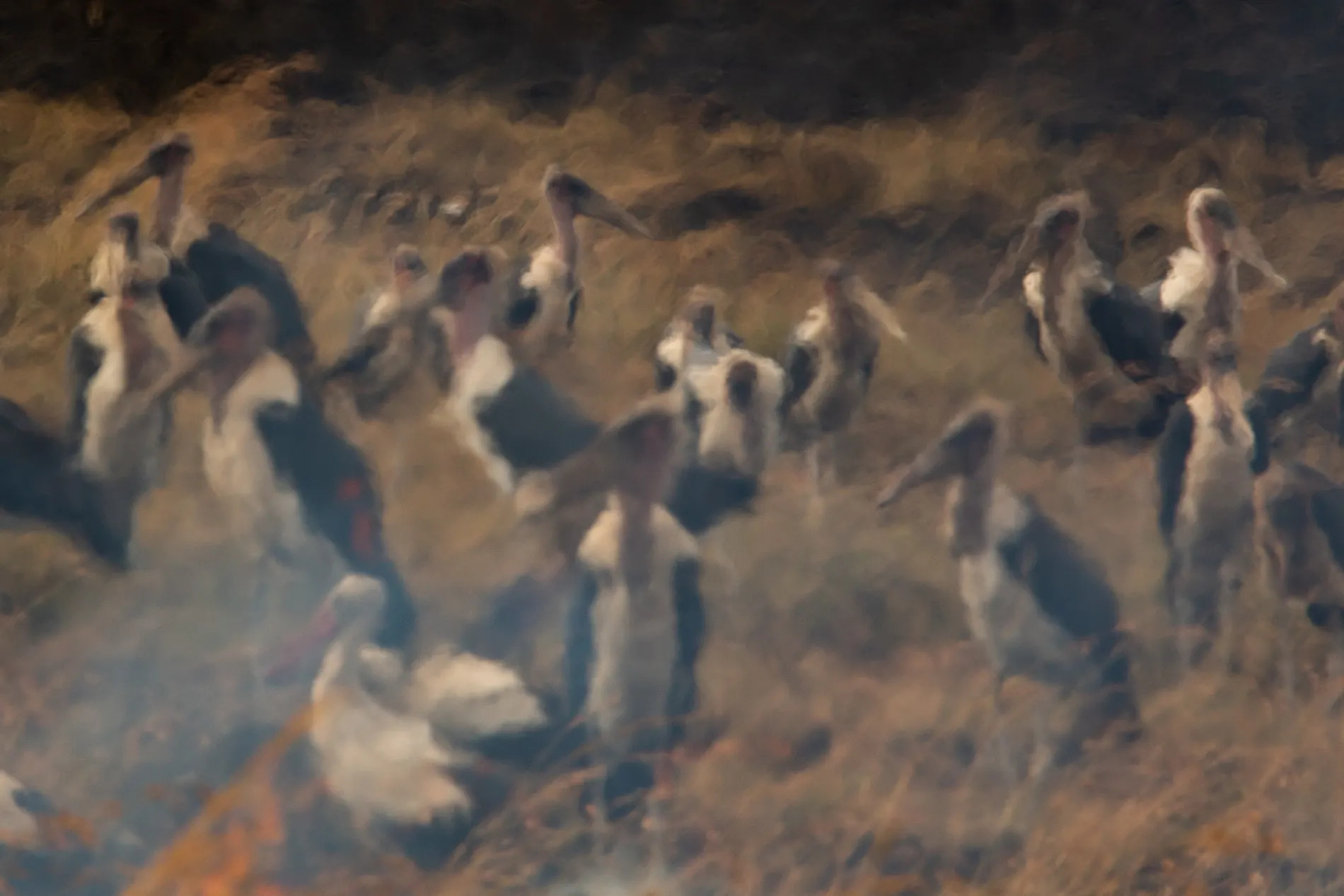
[f 8.0, 1/500, ISO 200, -0.33]
THIS WEEK A YEAR AGO
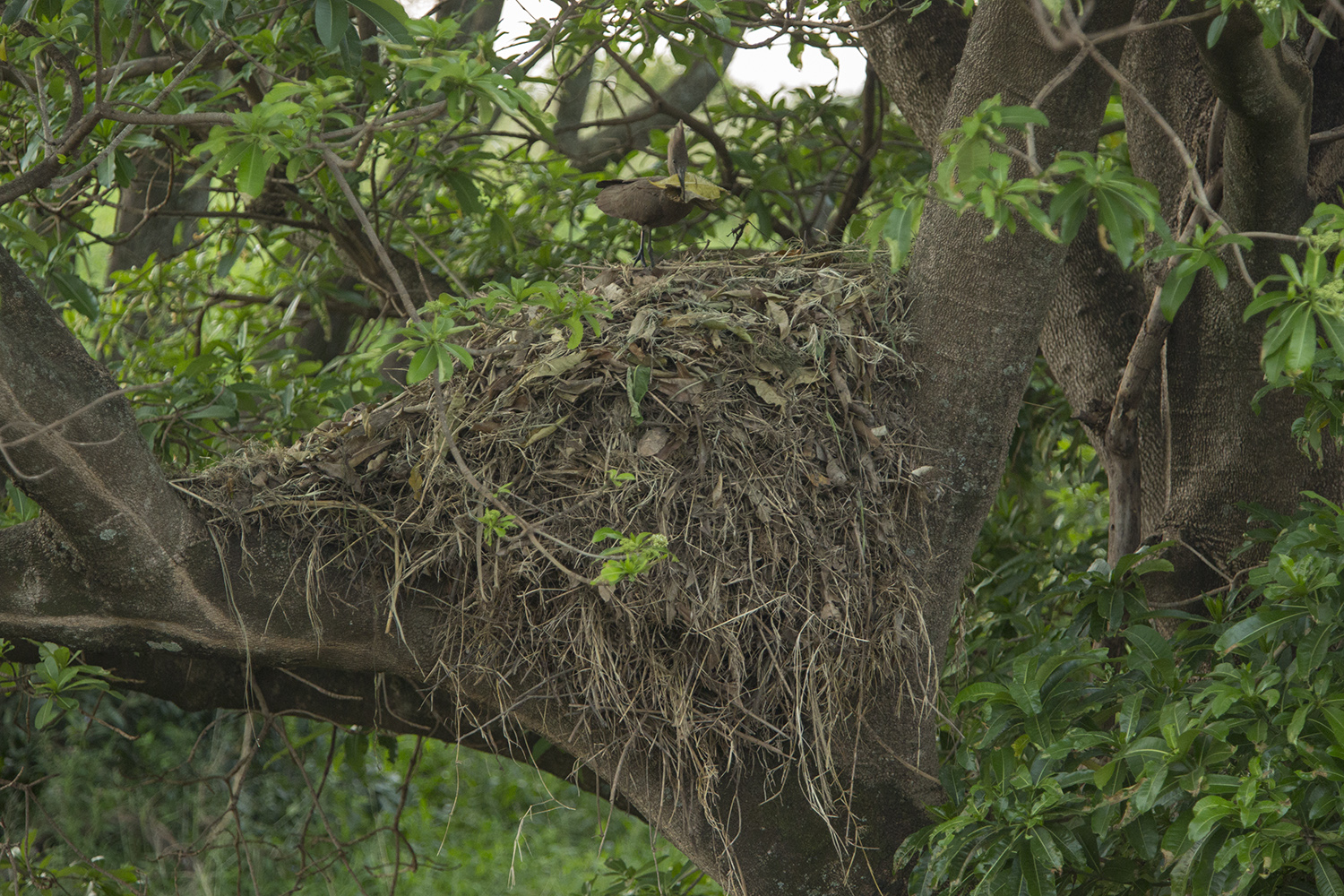
One year ago, a pair of hamerkops were furiously putting the final touches to a nest. It had taken them almost four months to get the nest to this stage. Sadly, as far as I am aware they never spent a single night inside. The nest was built above a small drainage line and with the heavy April showers it was soon swept away. I have yet to discover their new nesting place. [f 4.0, 1/100, ISO 2500, +0.33]



COMMENTS (2)
Gillian Evans
March 29, 2019Great selection and love the low angle shots! Very sad to hear that the angama pride lion cubs have not survived! Must have been difficult to witness!
REPLYFrancis C. Bagbey
March 29, 201960 consecutive weeks of TWAA! What an achievement. And this installment’s pictures are just incredible. Thanks for bringing this beauty to us.
REPLY